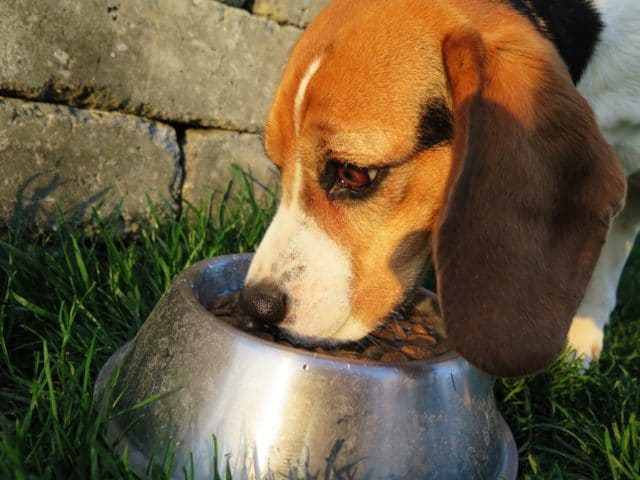
As a dog owner, it’s important to feed your pup healthy food they’ll actually enjoy eating. But with so many types of dog food out there, it can be hard to know what’s best for your furry friend. The last thing you want to do is give your dog food that doesn’t meet their health and lifestyle needs.
In this article, we’re covering everything you need to know about dry store-bought food vs raw diet for dogs. By reviewing the differences between two dog food types, as well their pros and cons, you can find the best food for your furry friend.
What You Need to Know About Dry Store-Bought Food
While dry dog food ingredients vary by brand, their content, calories, and nutritional value is regulated by law. Dry dog foods are required to include the following types of ingredients:
- Grains
- Cereals
- Vitamins
- Minerals
- Antioxidants
- Protein (beef, poultry, eggs, etc.)
If you’re planning to buy dry store-bought dog food, you should look for named animal protein sources at the top of the ingredients list. Ingredients are listed by weight, so the dog food will mostly consist of whatever thing is listed first. Avoid any dog food that just lists “meat” as an ingredient because that meat will always be low-quality.
Dry dog food is convenient and often more affordable than other dog food. Unfortunately, it can also be less palatable and many pet owners and dog caretakers don’t appreciate how processed it is.
What You Need to Know About A Raw Diet for Dogs
While dry store-bought dog food is processed, a raw dog food diet is focused on raw meat. This diet usually consists of the following types of ingredients:
- Muscle meats
- Organ meats
- Bones
- Raw eggs
- Fruits and vegetables
- Yogurt
The raw diet originally started with racing greyhounds and sled dogs, and only in recent years has this diet been extended to other dogs. The raw diet for dogs has many perceived benefits.
Here are a few of the major health benefits:
- Improved dental health
- Healthier skin
- Greater energy
- Shinier coats
Like dry dog foods, there are some drawbacks to the raw diet for dogs. This diet is much more time consuming than standard commercially made dog food. That’s because it requires handling, preparation, and sanitation of raw food.
The raw diet is also not recommended for dog owners who have small children or family members with immune issues. That’s because eating raw dog food presents health risks for the dog like salmonella, E-coli, and listeria.
Dry Store-Bought Food vs Raw Diet for Dogs: Which Is Better?
Both dry store-bought food and raw diet food have their pros and cons. If you have a working canine that hunts, races or serves in law enforcement, you may want to consider the raw diet. Dry store-bought food could be your best if you have a more sedentary dog.
Final Thoughts on Dry Store-Bought Food vs Raw Diet for Dogs
Ultimately, you should discuss your pet’s needs, and dry-store bought food and raw diet for dogs with your veterinarian. They’ll help you decide what’s best for your dog based on their nutritional needs, lifestyle, and more.
Did you find this article helpful? Need other dog care tips? Check out our How-Tos to find out the best ways to care for your dog.



